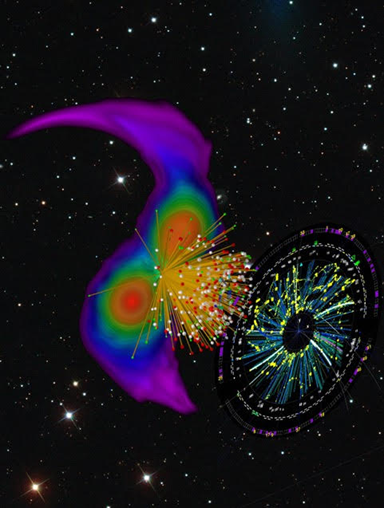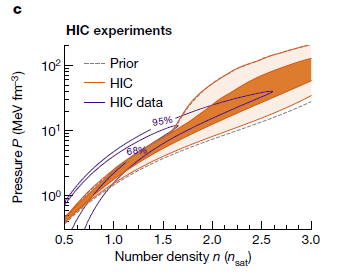Constraining neutron-star matter

For the first time, an international research team, including researchers from the GSI Helmholtzzentrum für Schwerionenforschung in Darmstadt, members of the ASY-EOS collaboration, has combined data from nuclear physics experiments, gravitational wave measurements and other astronomical observations with theoretical insights to more precisely constrain the conditions of nuclear matter, as it can be found in the interior of neutron stars. The results were published in the scientific journal Nature (Huth et al. Nature 606, 276 (2022)).
Throughout the Universe, neutron stars are born in supernova explosions that mark the end of the life of massive stars. Sometimes neutron stars are bound in binary systems and will eventually collide with each other. Consequently, neutron stars and their collisions are a unique laboratory to study the properties of matter at densities far beyond the densities inside atomic nuclei. Heavy-ion collision experiments conducted with particle accelerators are a complementary way to produce and probe matter at high densities and under extreme conditions.
The authors incorporated the information from collision experiments with gold ions performed at GSI in Darmstadt as well as at the Brookhaven National Laboratory and the Lawrence Berkeley National Laboratory in the US in their multi-step procedure that analyzes constraints from nuclear theory and astrophysical observations, including neutron star mass measurements through radio observations, information from rapidly spinning neutron stars gained in the Neutron Star Interior Composition Explorer (NICER) mission on the International Space Station (ISS), and multi-messenger observations of binary neutron star mergers.
Including data of heavy-ion collision in the analyses has enabled additional constraints in the density region where nuclear theory and astrophysical observations are less sensitive. This has helped to provide a more complete understanding of dense matter. A relevant part of the heavy-ion collisions data comes from the ASY-EOS experiment, carried out at GSI in 2011, coordinated by INFN researchers of Laboratori Nazionali del Sud, Sezione di Catania, and Dipartimento di Fisica e Astronomia "Ettore Majorana" of University of Catania. Researchers of INFN-Milano and Politecnico Milano participated too. In that experiment, part of the CHIMERA multi-detector of LNS, was moved to GSI laboratory and there successful employed. The ASY-EOS experiment has been one of the first laboratory investigation of the symmetry energy of the nuclear equation of state at densities above the saturation one, a field where, till now, just few laboratory studies exist. This new paper highlights the capabilities of INFN and Catania University researchers in producing high-quality data with a considerable impact on physics cases of large interest, as the one of neutron star properties. INFN-LNS, INFN-CT and UNICT researchers, in the framework of the activities of the R3B collaboration, are now planning new measurements at the GSI/FAIR laboratory, aiming to enlarge the previous results, as needed for an, even better, understanding of the symmetry energy at high densities and modelling of neutron star.
See also https://physicstoday.scitation.org/do/10.1063/PT.6.1.20220610a/full/ for further reading.
Evolution of the pressure as a function of baryon number density for the EOS in neutron-star matter. From Huth et al. Nature 606, 276 (2022).
Data di pubblicazione: 28/06/2022
